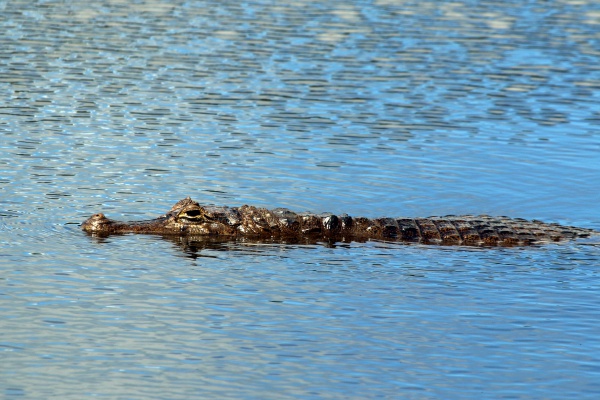Facts About Spectacled caiman
The spectacled caiman, also known as the white caiman, common caiman, and speckled caiman, is an intriguing member of the Alligatoridae family. It is easily identified by the unique spectacle-like ridge between its eyes, which inspires its name. These caimans come in shades of brownish, greenish, or yellowish-gray and can grow to a length of 1.4 to 2.5 meters. They typically weigh between 7 and 40 kilograms, with males generally being larger and heavier than females.
The breeding season for the spectacled caiman spans from May to August. During this period, females lay between 14 and 40 eggs, typically in July and August. Their diet varies with the seasons and includes a wide array of foods such as crabs, fish, mammals, snails, and occasionally plants. These caimans are widespread across Latin America and have even made their way to the United States.
Scientifically, the spectacled caiman was first described by Carl Linnaeus in 1758. There are four recognized subspecies. They feature distinctive coloration and characteristics such as enlarged teeth, a tapered snout, and the notable bony ridge between their eyes.
In terms of behavior, spectacled caimans are generally quite still but can move quickly when threatened. They possess a diverse diet and use vocalizations and visual signals to communicate with one another. Breeding is a significant aspect of their life cycle, with females constructing nests and caring for their young.
These caimans inhabit a variety of environments, including forests, wetlands, rivers, and grasslands. Conservation efforts are in place to protect them from threats like habitat loss and overhunting. These include captive breeding and release programs, as well as regulations on hunting and trade.
Fortunately, the spectacled caiman is currently listed as a species of least concern on the IUCN Red List. Ongoing conservation efforts aim to sustain their populations and preserve their natural habitats.

 Guyana
Guyana